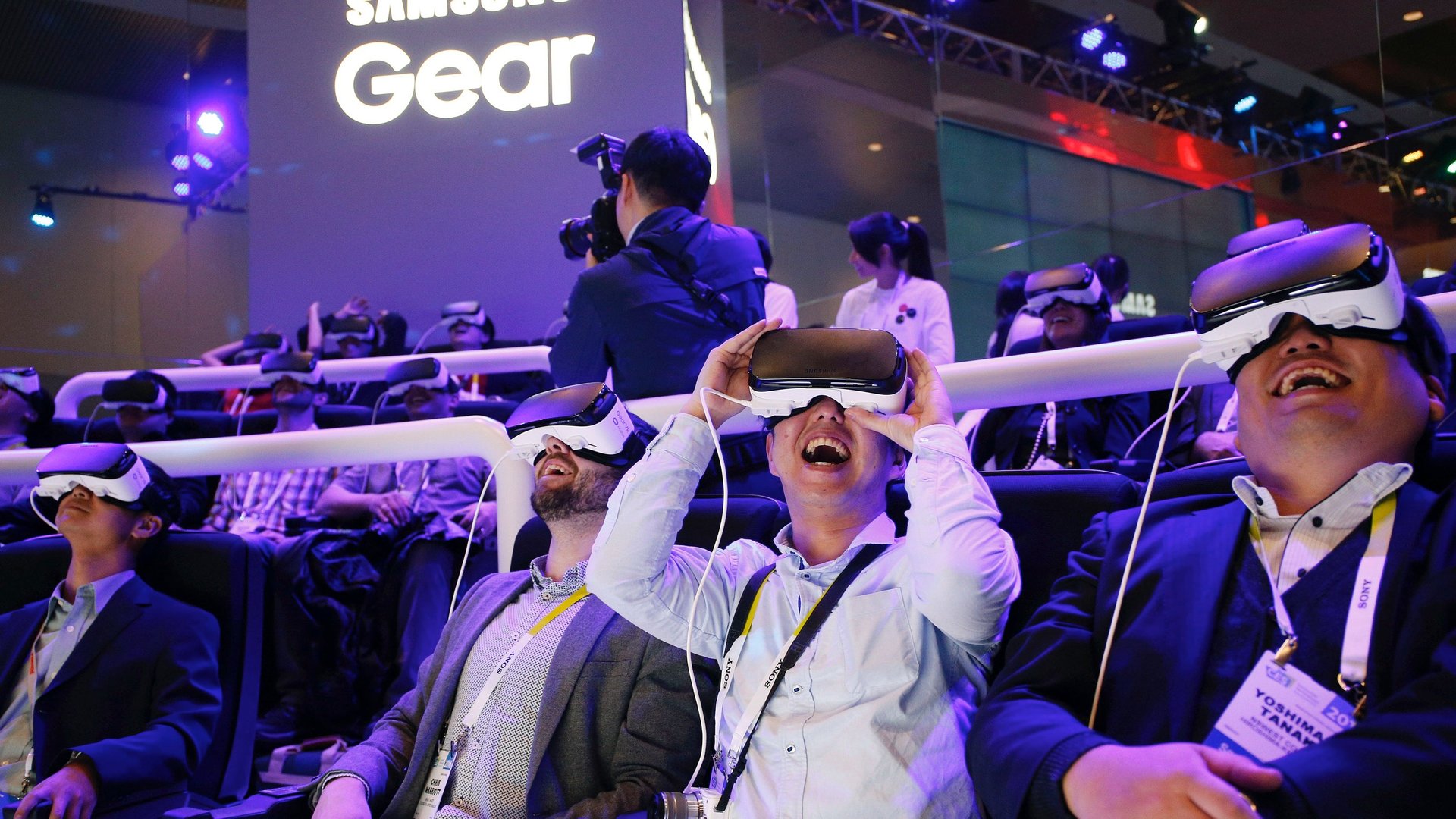Samsung doubles down on VR and says it’s going to build another, phone-free headset
Last year, Samsung introduced a virtual reality headset that only cost $100. The catch: You needed one of Samsung’s flagship smartphones to power the device, and those cost about $700. To fix this, at the company’s developer conference in San Francisco April 27, Samsung announced plans to build a more complete VR device, potentially to rival Facebook’s Oculus Rift—its partner on the existing Samsung Gear VR.


Last year, Samsung introduced a virtual reality headset that only cost $100. The catch: You needed one of Samsung’s flagship smartphones to power the device, and those cost about $700. To fix this, at the company’s developer conference in San Francisco April 27, Samsung announced plans to build a more complete VR device, potentially to rival Facebook’s Oculus Rift—its partner on the existing Samsung Gear VR.
“We are working on this wireless and dedicated VR devices, not necessarily working with our mobile phone,” Injohng Rhee, Samsung’s research and development lead, said at the conference. Rhee said that the device could have tracking capabilities similar to other VR devices on the market, and that he and his team want to recreate the “holodeck” experience—a room in the Star Trek franchise that allows people to get the sense that they are in an entirely new, but simulated, world.
But Rhee indicated this won’t happen in the near future, suggesting that this take two to three years. “VR is amazing, but the industry is still in infancy,” he added.
The Gear VR is limited by the power and motion-tracking abilities of Samsung’s smartphones, whereas the more expensive VR headsets on the market, including the Rift, and the HTC Vive, must be connected to powerful desktop computers to run. That allows them to have better graphics, more in-depth experiences, and better sensors for tracking the wearer’s head and body movements (which cuts down on the potential for motion sickness).
A representative for Samsung told Quartz that nothing will be change on the company’s existing Gear VR headset, but wasn’t able to comment on how the new, standalone headset might affect its relationship with Facebook. Samsung worked with Facebook’s subsidiary Oculus to help design the Gear VR; Oculus has a store of games and apps available for Samsung devices.
Samsung’s software director, Andrew Dickerson, also said at the conference, that the company’s new 360-degree camera, the Gear 360, will be released this week, according to Variety. The camera can livestream and record 360-degree video back to a Samsung phone, which can be viewed in real time (or after the fact) on a Gear VR. While this sort of video is decidedly not virtual reality, Samsung’s camera is easy to use, and Variety reports it’s likely to retail for about $350. It could well help fill the content gap for all the people that received a free Gear VR with their preorder of a Galaxy S7 or S7 Edge smartphone and don’t really know what to do with it.
With more people uploading content to watch on their VR headsets from family and friends—and brands—with 360 cameras, they’ll likely start to see the utility in the device. Perhaps by then, Samsung will have a powerful virtual reality device that the general public will want. That’s assuming Facebook, HTC, Sony, and anyone else on the verge of releasing a VR system, hasn’t beaten Samsung to the punch by then.